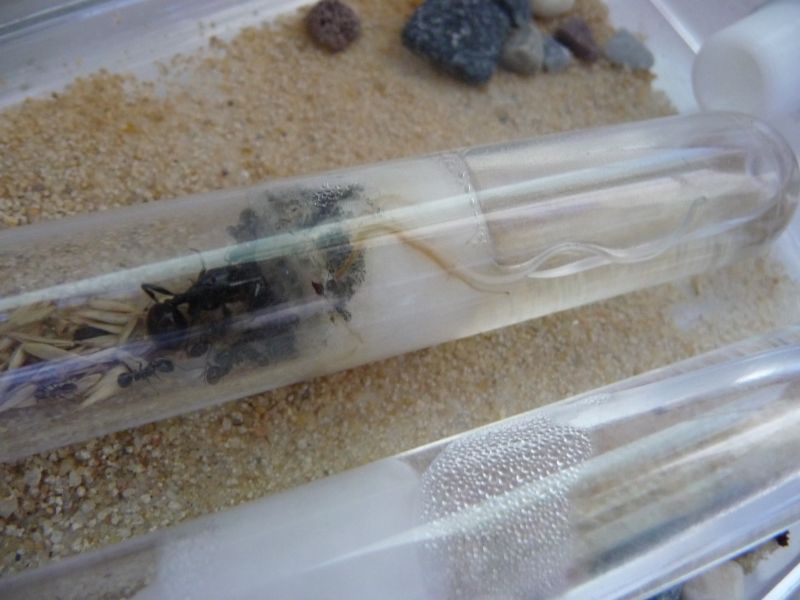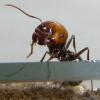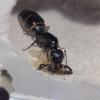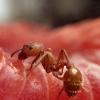This question goes to all the keepers with different kinds of harvester ants out there.
So I have been keeping Messor barbarus, and they are very good at separating different areas of the nest depending on heat and humidity. So for example, they have a place that is dryer where they store the seed, a moist place for the larvae and a warmer place for the puppae.
This is what I am used to seeing, as far away from the water source as possible:

I know that small Messor colonies cannot do this, and people raising young founding colonies often have the problem of seed sprouting in the nest. This also happened to me:

Now I have got a new colony, a very small species of tropical harvester ants. They come from the tropical rainforest of Thailand and nest in rotten wood and leaf litter on the ground.
At first I thought they would keep the seed in the dry area of the nest and live with their larvae on top of the water tower.
But no!
They have now moved the seed stash on top of the water tower.

How do your harvester ants handle this?
Have you observed similar behaviors?
Do your ants discriminate between "wet" and "dry" areas?
Or do you have to clean after them when the seed are sprouting?
I would love to hear your experiences and stories.


















